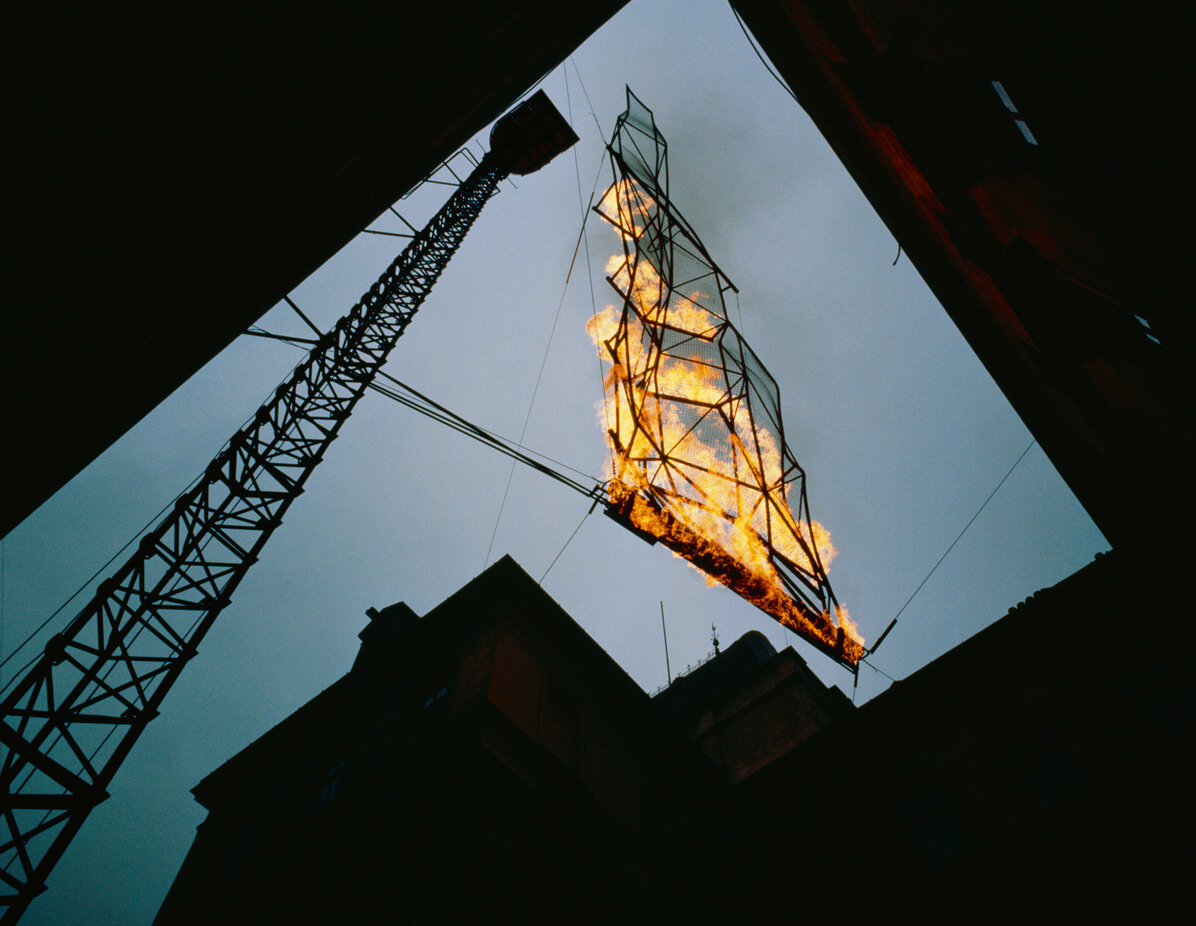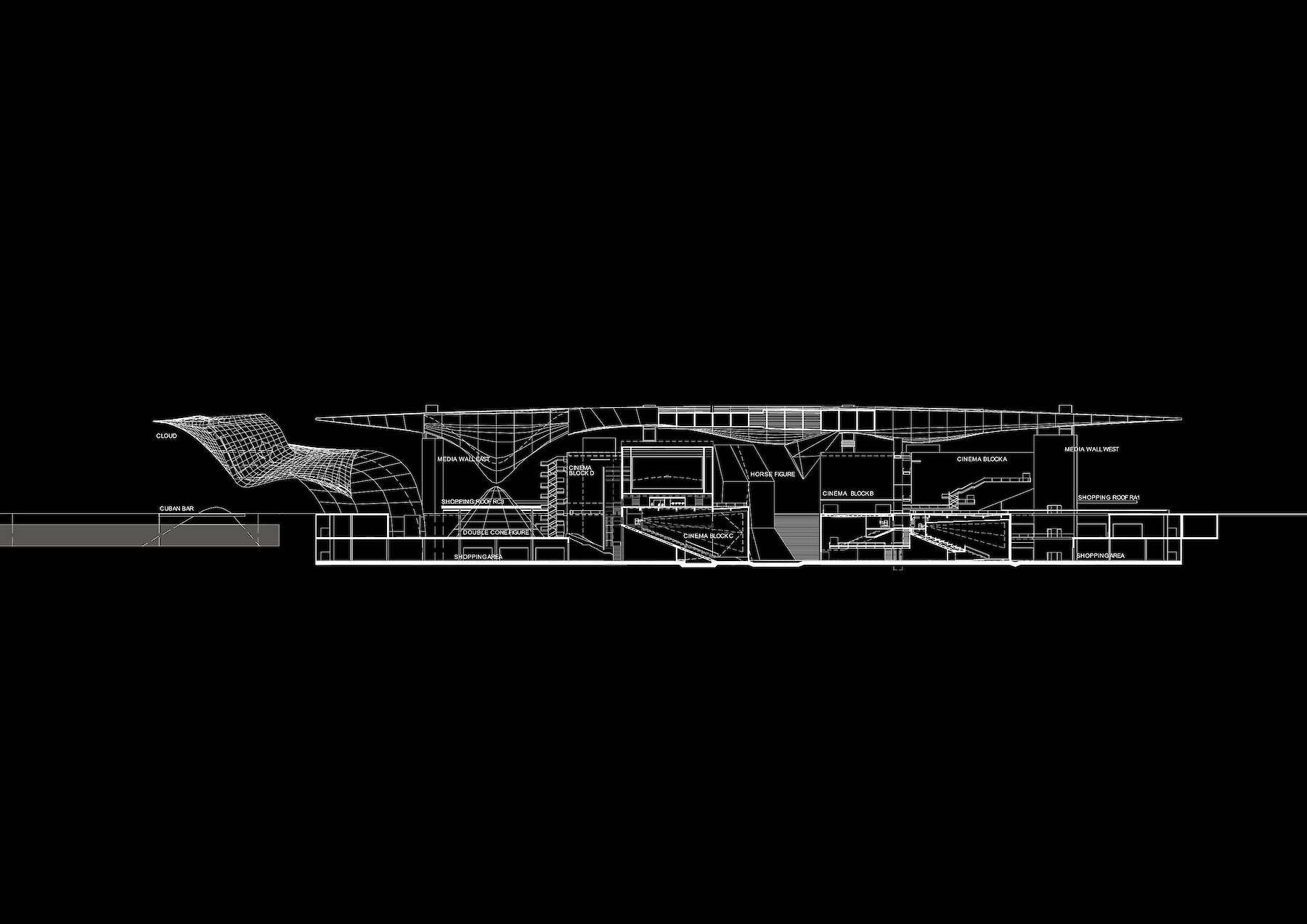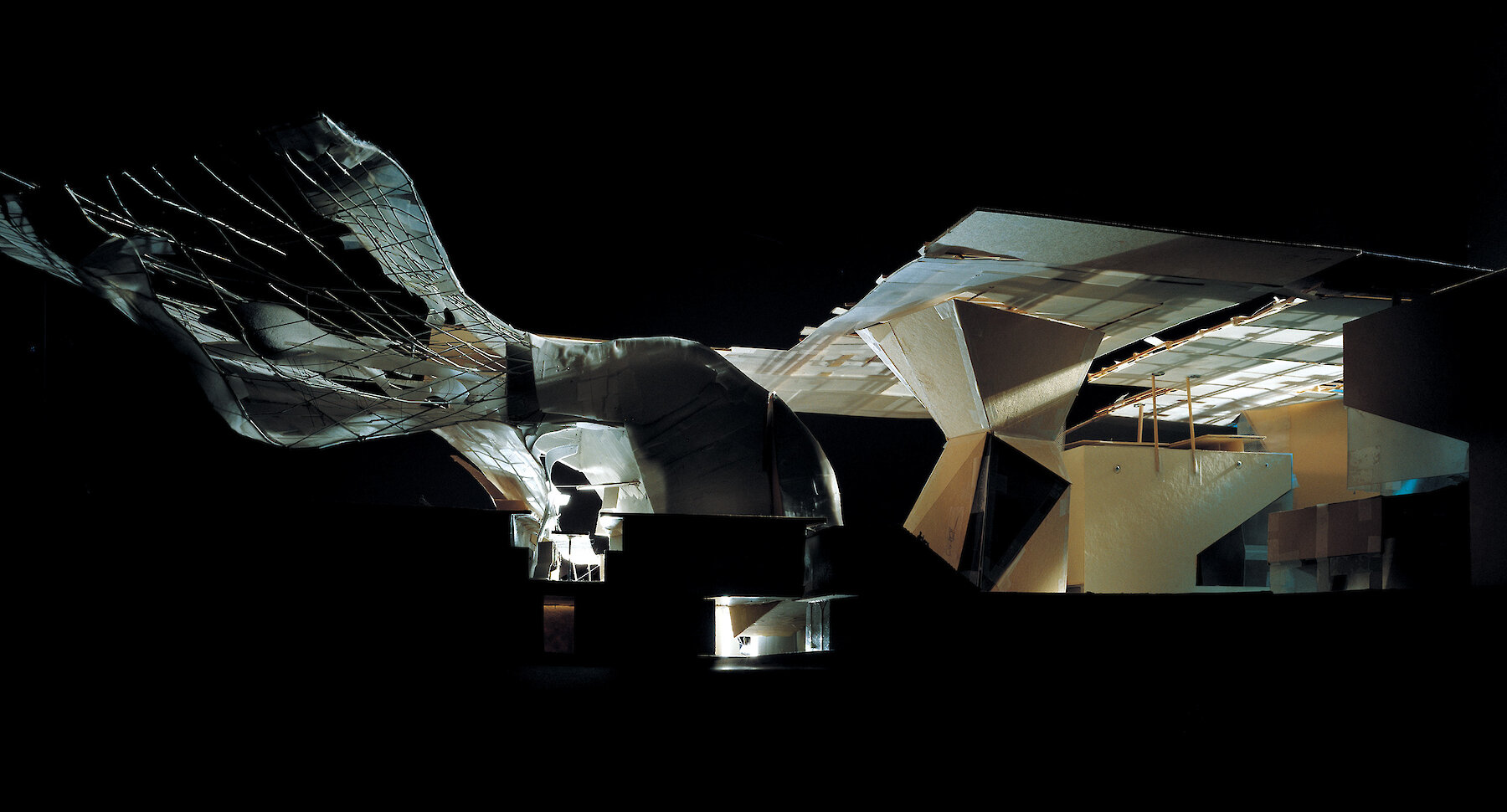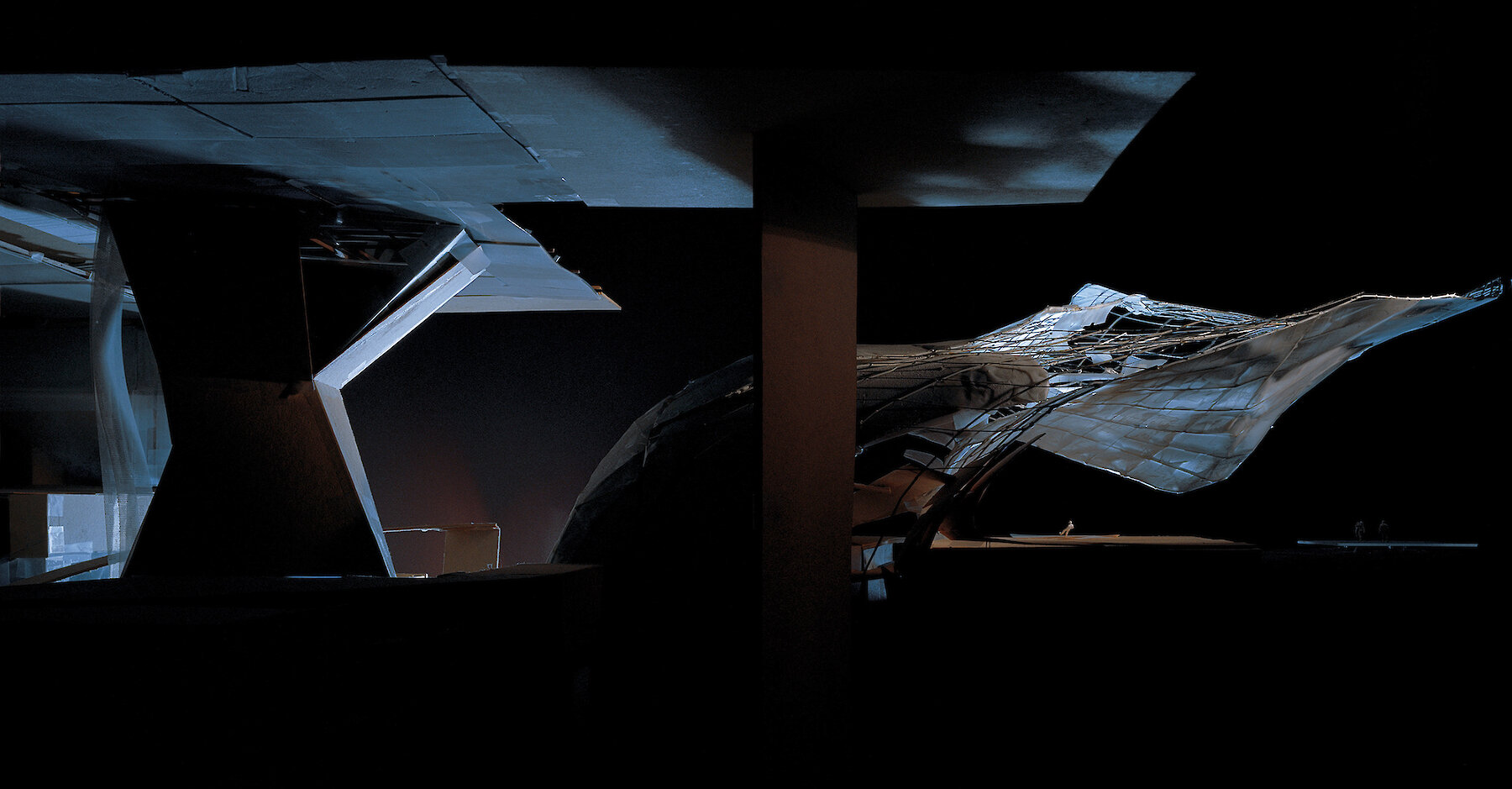JVC New Urban Entertainment Center

The Space of Knowledge
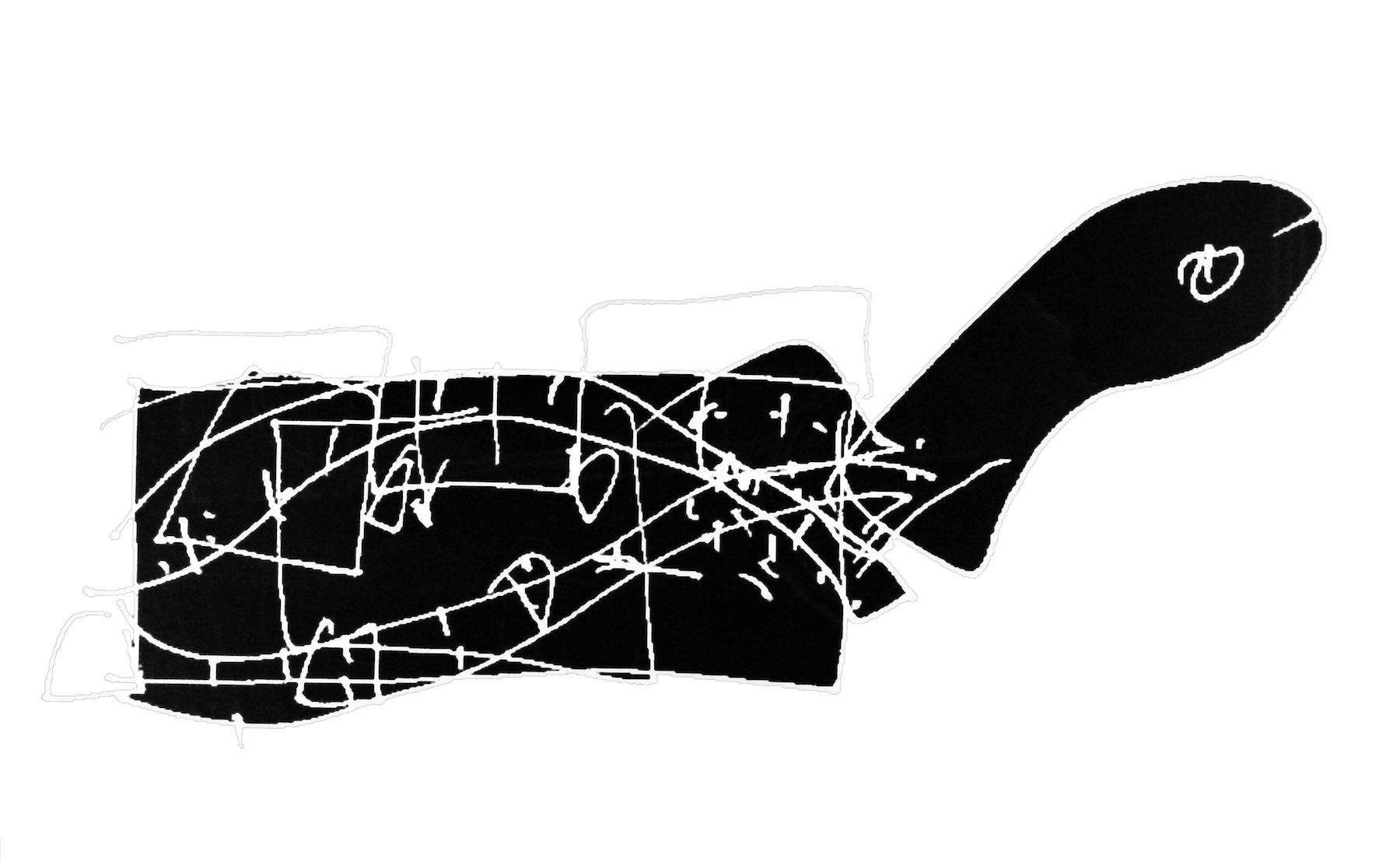
Sketch by Wolf dPrix
Project info
The concept for the design of the JVC New Urban Entertainment Center in Guadalajara, Mexico, is based on the idea of redefining the meaning of entertainment in the 21st century.
Recent studies show a shift in our society, from one based on information and communication to one based on an increasing level of knowledge. The development, production and distribution of goods and services rely more and more on knowledge. This trend results in a growing demand for highly qualified individuals and an increased importance of knowledge management in businesses. The flow of knowledge therefore becomes crucial in determining the performance of a society.
The design proposal for the JVC Entertainment and Commercial Center redefines entertainment from a place of mere consumption to a place of intellectual discourse. This “marketplace of the future” combines well-known forms of entertainment and commerce with new facilities coming from the production and exchange of knowledge. In this process, the health of body and mind is seen as crucial, thus generating a proposal of facilities for physical and mental well-being.
The program therefore consists of cinemas, exclusive restaurants, bars and clubs, shops, a fitness and pool area, offices for the research and development of technology as well as the Space of Knowledge, an animated exhibition area displaying information on recent technological innovations. Interactive computer terminals will give access to the internet and other global information networks, and will also provide information about the activities taking place in the adjacent facilities of the master plan. The sixteen cinemas will be of varied types and sizes: a premiere theater for 1000 people, an IMAX theater for 500 visitors and traditional cinemas seating 750, 500, 300 and 200 persons. The seven restaurants and seven bars or clubs will be designed by different guest architects according to various cultural and regional themes.
The proposed building complex is to be understood not as a building but as an open urban landscape. This building landscape seemingly extends beyond the boundaries of its site and — reflecting its central location and function in the master plan — becomes part of the open plaza which spans between the adjacent buildings and the lake.
The mass of the building is broken down into small blocks, creating a spatial sequence which dissolves the conventions of traditional perspective and allows for multiple views through the building on different horizons.
The building complex consists of five major elements: the ground plane, the cinema blocks, the shopping decks, the sculptural figures and the roof: The ground plane is partially broken into the ground to create the central sunken plaza. The plaza contains the cinema blocks and provides the main access to the multiple functions of the complex. Loft structures like park decks, still below ground, flank the cinema blocks and central plaza on both sides and contain the shops, the pool, the fitness area and the offices.
Five sculptural figures, three of which hold up the roof plate, contain circulations and several exclusive restaurants and clubs: the shaped tower serves as central circulation element and houses the Cuban club, while the double pyramid holds the Brazilian club, and the hanging triangle another restaurant and club. A double cone acts as a light well to the pool and fitness area whereas the jumping whale shelters the Space of Knowledge.
The slightly curved roof protects from the sun and rain. Its partially louvered areas allow for filtered sunlight to reach down to the plaza during the day, and the eye to the sky allows for an unobstructed view of the sky at night.
Different circulation elements create multiple movements through the building. Stairs on all sides of the complex fold the urban landscape down into the sunken plaza and allow for a fluid movement through the buildings. Additional stairs and ramps connect to the cinemas on upper levels as well as the restaurants, bars and clubs inside the sculptures or on top of the cinema blocks.
In addition, two ramps lead to existing pedestrian routes of the masterplan, the central street along the office buildings and the lake promenade. These ramps cut diagonally through the buildings to form the ‘snake alley’, a ‘medieval’ shopping street with diverse small, bazaar like shops ranging from traditional taco stands to high-tech computer stores, thus, together with the cinemas, offices and Space of Knowledge, create the “marketplace of the future”.
Project insights
- Location
- Guadalajara, Jalisco, Mexico
- Client
- Omnitrition de Mexico
- Design
- 1998
- Start of planning
- 1999
- End of planning
- 2001
- Site area
- 96.000 m²
- Gross floor area
- 333.15 m²

Armin Hess, ISOCHROM
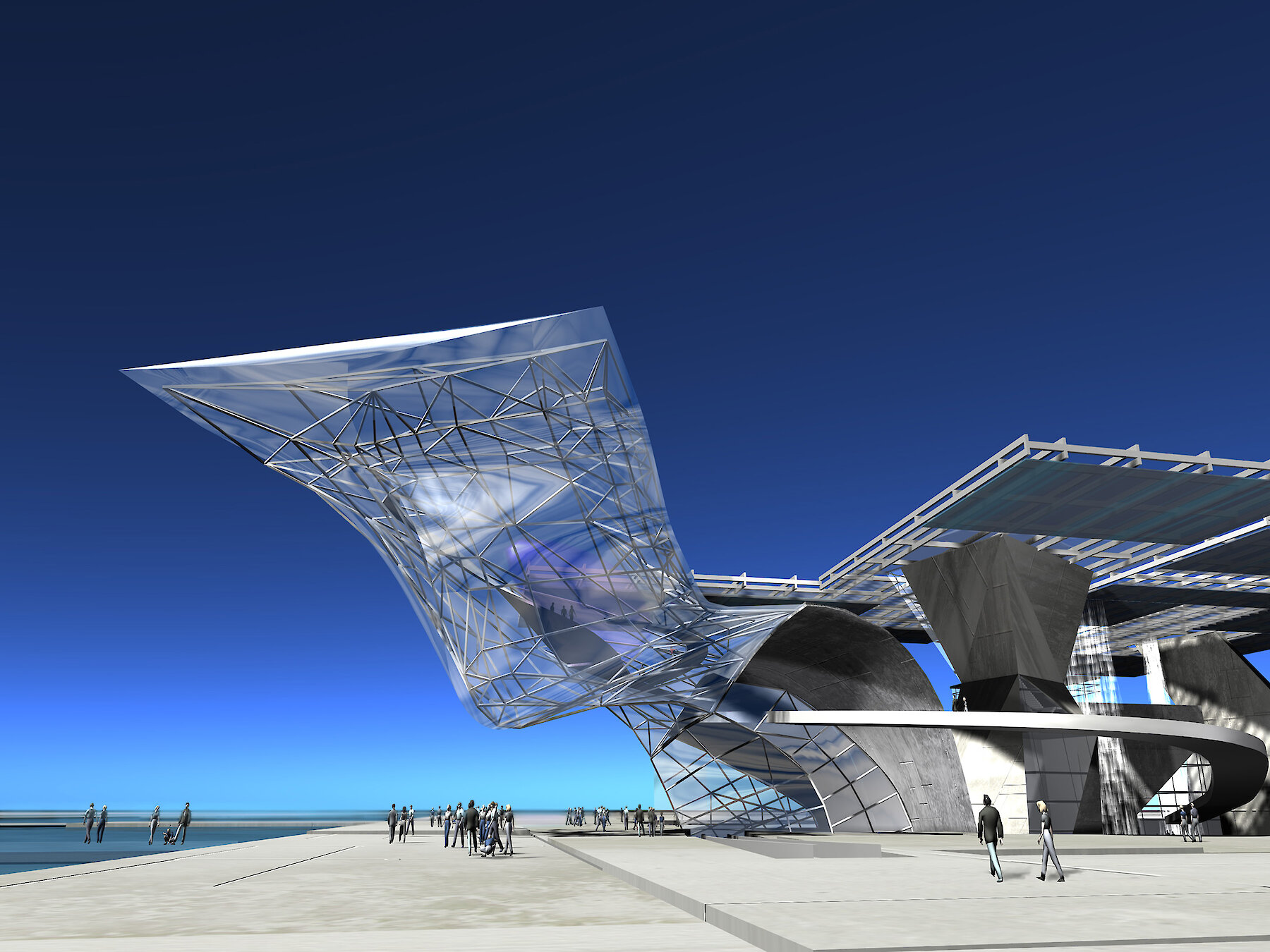
Armin Hess, ISOCHROM
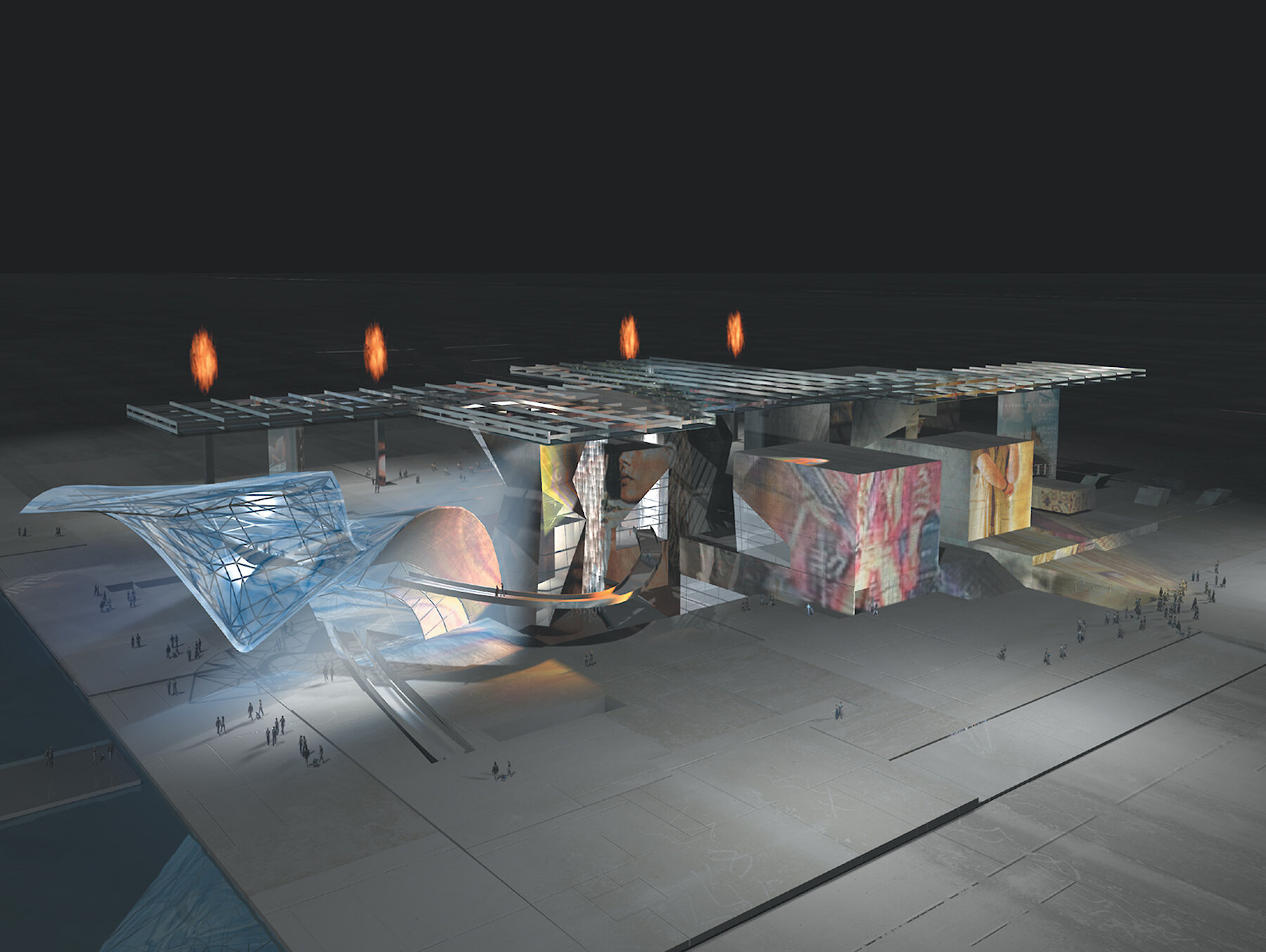
Armin Hess, ISOCHROM

Armin Hess, ISOCHROM
On the map
Related projects
The Open House
Malibu, California, USA
1983–1988


The Blazing Wing
Graz, Austria
1980
